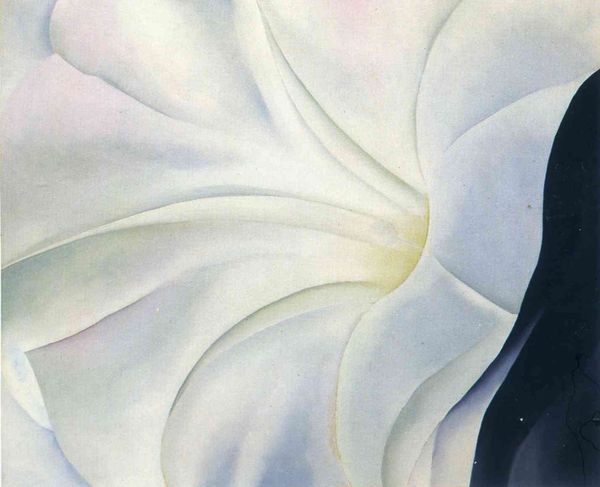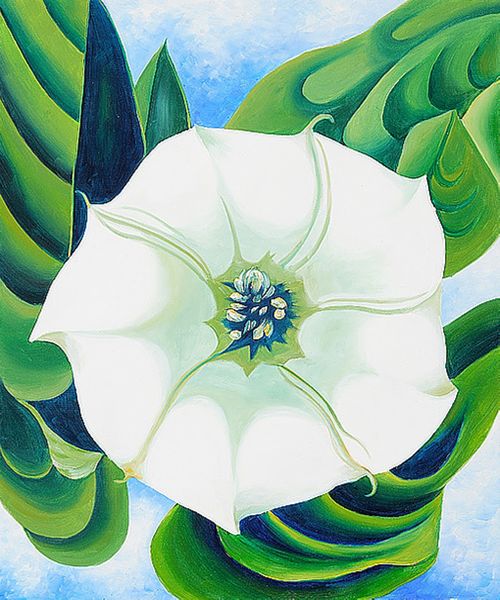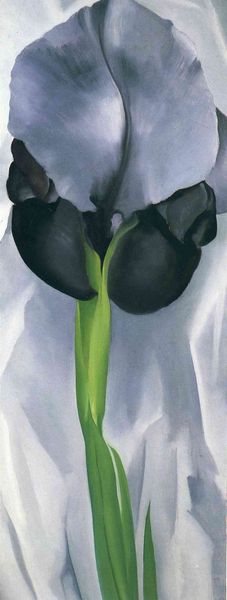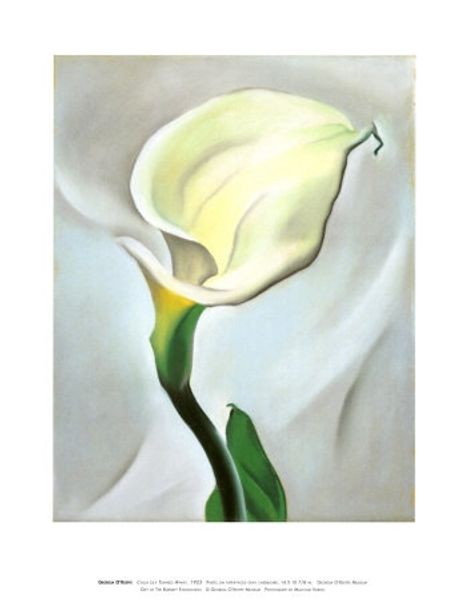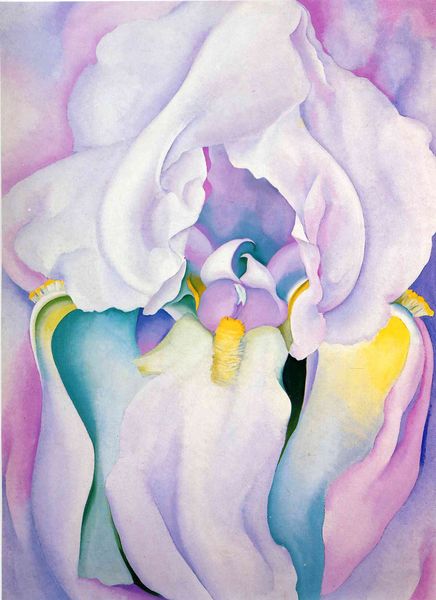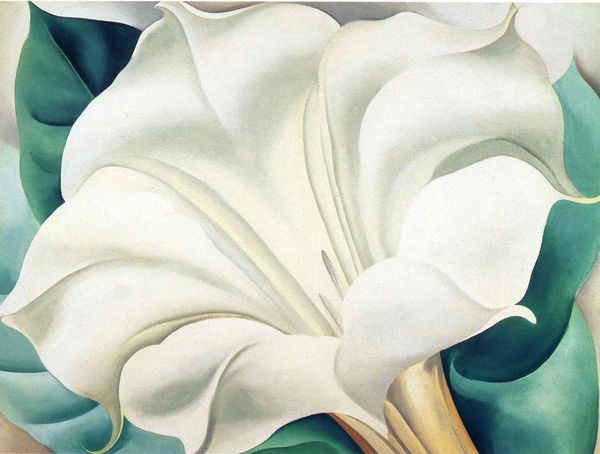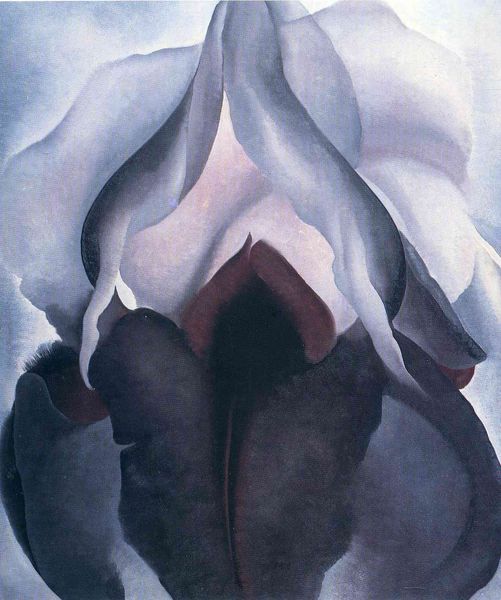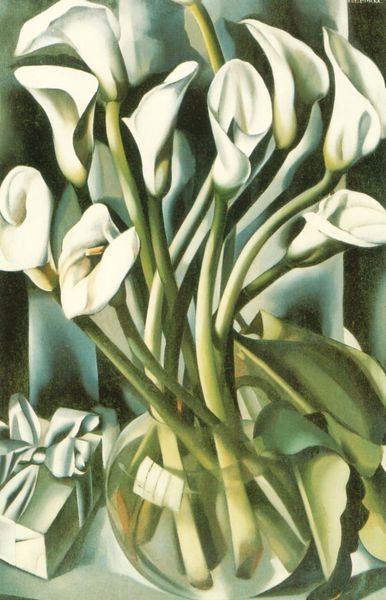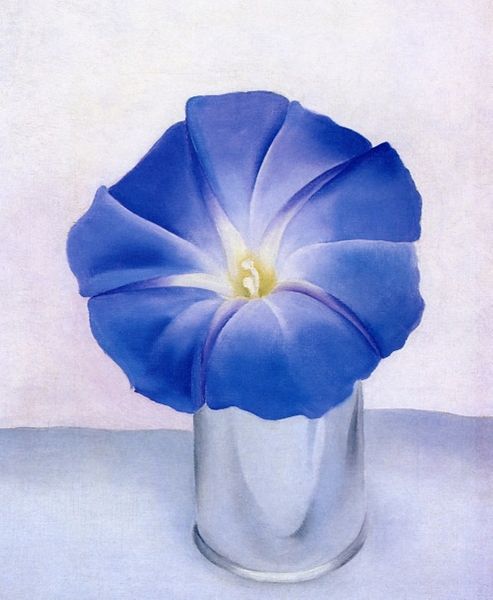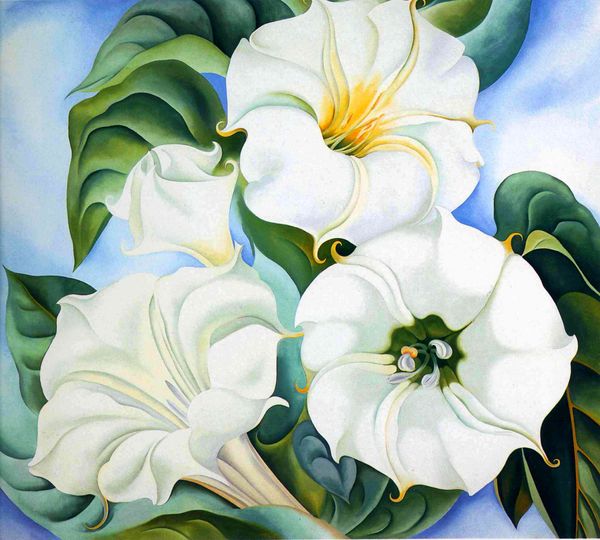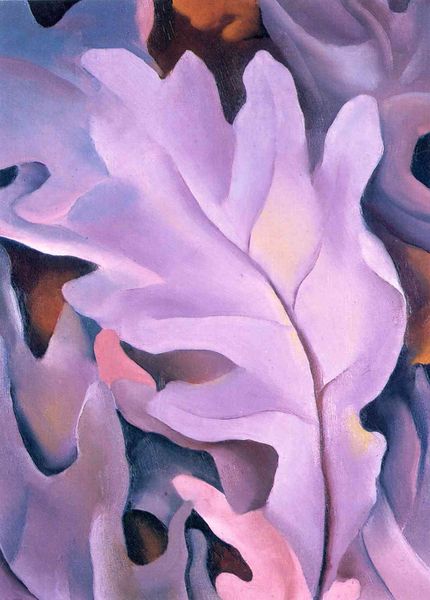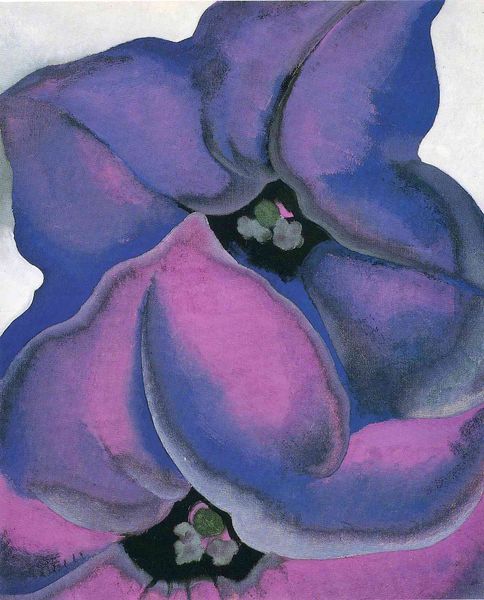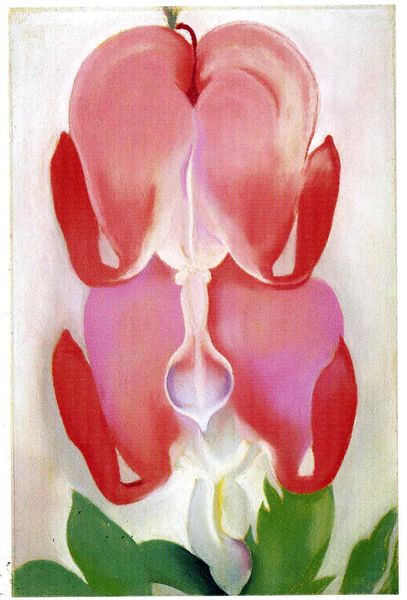
painting, oil-paint
#
precisionism
#
painting
#
oil-paint
#
landscape
#
flower
#
abstract
#
oil painting
#
plant
#
botany
#
portrait art
#
modernism
#
fine art portrait
Copyright: Georgia O'Keeffe,Fair Use
Curator: Standing before us is Georgia O'Keeffe's "Calla Lily on Grey," painted in 1928. It's one of her many studies of flowers, elevated to an almost monumental scale. Editor: My initial reaction is one of coolness. The subdued palette, primarily whites, greens, and grays, lends the piece a sense of restraint, almost industrial despite the subject matter being a delicate bloom. It reminds me of machinery. Curator: Absolutely, and I think that tension is crucial to understanding O'Keeffe's work at this time. She's working amidst the Precisionist movement, reflecting a fascination with the clean lines and industrial forms of modern America, though many perceived erotic overtones at that time, a reception she rejected. Editor: I agree, rejecting that claim only drives the point home more intensely. Consider the material – oil on canvas – traditionally a medium of high art, used here to depict what could be easily replicated or mass-produced. It feels deliberate. Was the scale something unusual for the time or the process of layering materials? Curator: She definitely embraced large formats; this allowed her to explore detail and abstraction simultaneously. The scale does shift the reception, demanding our attention, mimicking, perhaps, advertising aesthetics of the era. But O'Keeffe also lived in a context rife with artistic movements led by male leaders so naturally the gaze was given. She refuted it until her death, despite art scholars' focus on the narrative. Editor: Interesting. Even the "grey" of the title signals something of a factory landscape instead of a romantic, colorful floral. This color, juxtaposed with the flower's organic form is central to its cultural value. The focus wasn't simply on capturing the beauty of the flower, but embedding into modern culture by rejecting what modern culture offered. Curator: Yes! So it’s important to note O’Keeffe’s status within the art world in this moment too. As a woman, in a world predominated by men artists, her work would inevitably become politicized regardless of her intention, or not. It would impact the accessibility to the meaning of her materials and their processes, including canvas. Editor: Seeing her work today, I’m drawn to her dedication to exploring form and materiality in dialogue with contemporary societal shifts, and still feel a tension with her intent, compared to what meaning scholars extracted and gave her. The layers of interpretation only adds another layer of context! Curator: Precisely. It shows how works change, and have multiple identities over time depending on social change and their interaction.
Comments
No comments
Be the first to comment and join the conversation on the ultimate creative platform.
